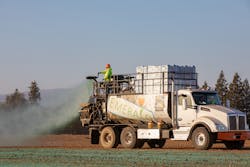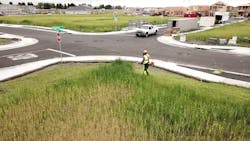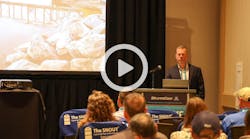The delay of the rainy season in California has given property and construction managers a bit of breathing room to make sure their sites are prepared for wet weather.
Rainy conditions paired with sediment run-off can be a lethal combination. This dirty water and debris can end up in the site’s stormwater drains, which means a hit to our environment and to your pocketbook.
Here’s why: Each raindrop acts like a tiny hammer on the ground, beating the dirt off hillsides and creating polluted run-off. This also magnifies the concentration of water flow and results in erosion. The more rain that falls and the faster that water flows, the more damage it can do, including polluting local water sources and aquatic habitats.
So, what can you do to mitigate this impact? Proper erosion and sediment controls can stop the initial rain damage and minimize the chance that water will become concentrated or flow too quickly over the dirt on a project site.
There are two key methods for erosion and sediment control. The first is hydroseeding, which covers bare soil in green vegetation and acts like armor for the ground. Nature’s choice is grass, and professional crews can recreate that natural vegetation with a seeding process over open areas, which should be done prior to the most severe storms of the season. In some cases, vegetation can’t be used, so other manufactured and hydraulically applied products can be used to protect the soil.
The second is using wattle or straw tubes. It’s the straw in mesh that often borders drains or the diameter of a project. Wattle is applied to manipulate where and how water flows during heavy rainfall. While we can’t stop water from moving, we can make it so the water covers an area much smaller than it would without barriers in place. Water cannot gain momentum or cause damage if it hits wattle every few feet.
Emerald Site Services has a toolbox full of solutions, including a Stormwater Pollution Prevention Plan (SWPPP) and a Qualified SWPPP Developer (QSD) or site monitoring and management by a Qualified SWPPP Practitioner (QSP). Our experts can develop customized, strategic services that work for your specific property.
Compliance with stormwater and erosion control can be complex and it’s helpful to consult with an expert to better understand what needs to be done to protect a site before the rain begins to fall—saving two things that matter most to the bottom line: time and money. SW
Austin Edwards is founder and principal of Emerald Site Services. Since 2007, Emerald has served Northern California with comprehensive stormwater consulting services, erosion and sediment control and more. Visit emeraldss.com to learn more.
About the Author




